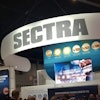Off-the-shelf LCD displays vary considerably in performance and require regular calibration to produce a suitable level of performance for clinical image review, according to research presented at the 2009 RSNA meeting in Chicago.
A research team from University College Dublin in Ireland evaluated three common display types (and 36 displays) and found significant improvements across all three display types following calibration.
"Calibration has a significant impact on the brightness and contrast of displays," said presenter Joanna Lowe. "This should have a positive impact on clinical images, so that more low-contrast detail is seen."
While the use of medical-grade displays for image diagnosis has become standard procedure, off-the-shelf displays are also becoming widely distributed throughout the hospital environment due to their low cost. The proliferation of Web-based image viewing software has allowed clinicians to view medical images on these displays, Lowe said.
Strict calibration standards and acceptable levels are enforced on medical-grade displays but are not so widely enforced for these secondary, off-the-shelf displays, Lowe said.
The research team sought to assess the impact of calibration on several physical and psychophysical parameters of various types of off-the-shelf LCDs. They also wanted to identify the extent of any variance across these types of displays.
Thirty-six off-the-shelf displays were evaluated before and after calibration, including 17 HP, 11 ViewSonic, and eight NEC MultiSync displays. The displays were the same model for each company.
Test patterns based on the American Association of Physicists in Medicine (AAPM) Task Group's 18 protocols were used to examine the physical and psychophysical performance of the displays. The researchers utilized the student's paired t-test to analyze the results for significance.
Displays were switched on one hour prior to calibration, which was performed using the DICOM standard under controlled ambient conditions.
After calibration, the researchers noted significant performance improvements for the psychophysical parameters of veiling glare and luminance response across all display types (p ≤ 0.05). In physical performance, the HP displays had statistically significant improvements in minimum luminance and contrast ratios. The ViewSonic displays had a statistically significant improvement in display uniformity after calibration.
In negative findings, the HP displays had a significant reduction in performance for physical evaluation of veiling glare after calibration, Lowe said. This finding is undergoing further assessment, but the researchers believe that the increased contrast ratio is having an incremental effect on the veiling glare.
Overall, the HP displays responded best to calibration, achieving improvements in five of the nine parameters in the study. The NEC displays had improvements in two parameters, while the ViewSonic displays had gains in three.
The varying performance levels of the displays in the study is a cause of concern, Lowe said. The researchers are currently working on a study to evaluate the diagnostic impact of this variation.
By Erik L. Ridley
AuntMinnie.com staff writer
December 14, 2009
Related Reading
Road to RSNA, PACS, Off-the-shelf LCD monitors may need more time to warm up, November 2, 2009
Multitouch imaging displays, Wii remote show promise in PACS, July 6, 2009
Consumer displays compare well with medical-grade displays, November 27, 2007
Building the Best RFP: Part 2 -- Display software, July 16, 2007
Consumer color display may be suitable for radiographic image review, November 30, 2006
Copyright © 2009 AuntMinnie.com




















